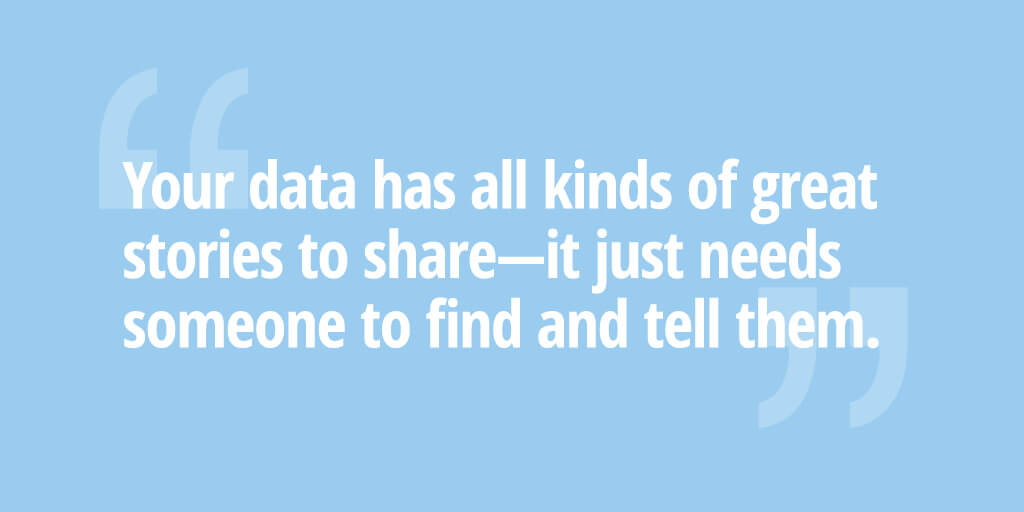Trap #1—the Data Cut
Everything starts off the right way as you begin by slicing and dicing the data to discover a meaningful insight. However, once a particular cut of the data yields an interesting insight, nothing is done to then package it up for others. In this scenario, you mistakenly assume because the raw information speaks to you, it will speak equally well to your audience. Unfortunately, like an unedited director’s cut, the data cut leans too heavily on the impact or persuasiveness of the raw facts. It ignores the importance of having a well-crafted narrative and explanatory visuals to help others better understand the insight’s significance.
Trap #2—the Data Cameo
Interestingly, this next trap is rich in narrative and showcases some key data points. However, it begins with a predetermined story—or perhaps more accurately, an agenda—and then looks for supporting data. Only data points that uphold the desired narrative are selected while conflicting ones are ignored—either intentionally (selectivity, omission) or unintentionally (confirmation bias). This approach is common whenever someone feels they must justify a decision or show why a particular initiative was successful. Unfortunately, data only makes a cameo appearance in this narrative—more for show than as the foundation of the story that it should be. When data isn’t central to the overall story, a data cameo can quickly unravel under closer scrutiny.
Trap #3—the Data Decoration
The last trap has emerged as more individuals gain access to data visualization tools. People now have access to more data than they know what to do with, and they can display this data in lots of different ways. This addictive combination of limitless data and graphical eye-candy has led to the emergence of data decorations. This scenario occurs when individuals stumble through the exploratory phase without identifying a clear insight, and then jump ahead to visualizing data for others without crafting a cogent narrative. By simply sharing the data charts and dodging the real analysis work, they hope someone consuming the data will somehow find something meaningful. However, rather than adding value, data decorations can often just end up adding unwanted noise.
Each of these data storytelling traps excels in one key aspect of what is needed to form an effective data story but has flaws in the other two essential areas. For example, the data cut is strong on data but is weak in both narrative and visuals. The data cameo is rich in narrative but suspect on data. The data decoration offers appealing visuals but lacks a focused narrative. Only a true data story combines all three aspects—data, narrative, and visuals—effectively.
As more and more of your people leverage data in their roles, it is imperative that both managers and employees learn to distinguish between real data stories and other less-effective approaches. While data offers tremendous potential for your organization, it won’t lead to the right business decisions if it’s not properly analyzed and communicated. Without effective data storytelling, you may end up “digging the wrong place” as Indiana Jones once noted— lots of activity and noise with little success. However, when you base the right narrative and visuals on the right data, you have the power to inspire positive change and improved performance. Your data has all kinds of great stories to share—it just needs someone to find and tell them. And so the adventure begins.
**This article was originally published on Forbes.com on April 25, 2017.
